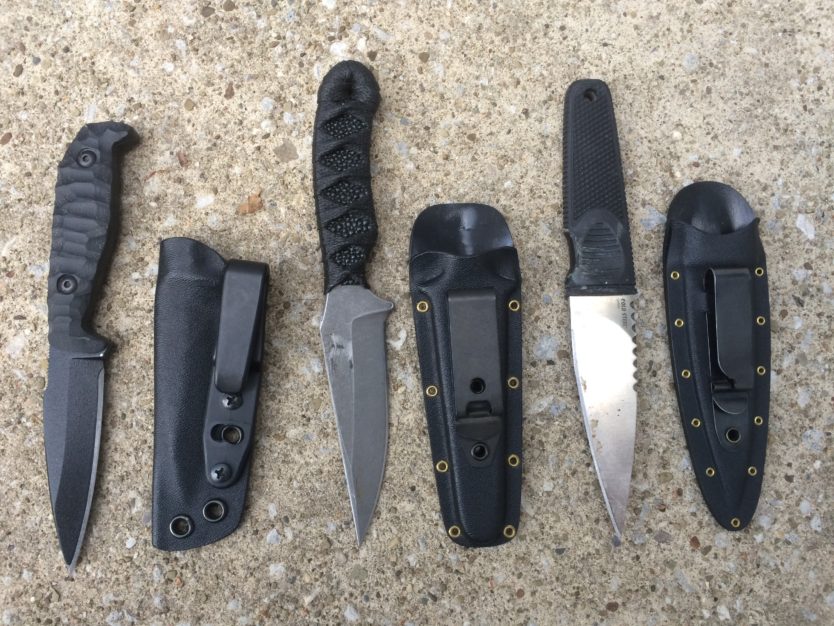If it moves it can break! That is a basic principle of engineering. Moving parts are vulnerable to forces applied to any of the non-fixed parts. Folding knives have a hinge; they are made of several parts: the blade, the handle, the locking mechanism and probably some type of release switch and/or lock. A fixed bladed knife is one piece of steel with a gripping surface attached.
Although my Ph.D. is not in physics, I am a certified science teacher and study physics as part of my job instructing Pramek Adaptive Combatives, which is very science based. I teach knife defense and also knife combatives as part of the curriculum as a Pramek Adaptive Combatives Instructor and have also taught knife defense and knife combatives at several seminars in the past. I usually receive opposition to the fact that I do not teach the usage of folders as combat knives.
Whenever an object has two parts connected by a hinge breakage can occur as well as a serious injury to the person holding the knife if the hinge does break. The knife user will have his or her fingers cut quite severely.
The torque is the product of the magnitude of the perpendicular force multiplied by the lever arm. Because you are applying a force to the end of the folding knife’s blade, there will be a push back of force (Newton’s 3rd Law – equal and opposite reaction) and that force can ultimately be manifested in a perpendicular load on the blade and subsequently create a substantial magnitude of torque at the pivot point (hinge).
Even if you have complete confidence that your knife will not break while cutting or stabbing another human being, what about the possibility of the knife striking a hard surface such as the ground or a wall during the dynamic stages of combat?
Depending on the jurisdiction, fixed blade knives may not be legal to carry concealed; if that is the case, perhaps a concealed weapons permit will allow you to do that. In Florida, that is the case. A fixed bladed knife is a knife designed for fighting. Although the convenience of carrying a folder may be attractive, it is not intended to be combat knife.
Many people think it is not possible or practical to carry a fixed blade knife in a sheath, however, it most certainly is. There are many short and very high quality fixed blade knives available that can have the sheath attached to a belt or that even have clips for when not wearing a belt. There are also other carry methods such as inside of a boot or on the ankle.
With a fixed blade knife, the tip may break if the blade strikes a hard surface but the knife will not fold in half cutting your finger and become useless as a folder would.
Think about it and you make your own decision with your kit, but remember, you might be betting your life on that decision!
This article was originally published on the Loadout Room and written by Dr. John M. Landry, Ph.D. (State Law Enforcement Detective Lieutenant – Retired). Dr. Landry has served as a police instructor since 1995, and is certified as a Field Training Officer, Firearms Instructor (Rifles-Shotguns-Pistols), General Topic Instructor, Defensive Tactics Instructor, TASER Instructor, Chemical Weapons Instructor, Impact Weapon Instructor, Firearm Retention Instructor, Handcuffing Instructor, and Reality Based Training Instructor. Dr. Landry has also trained with some of the best instructors in martial arts, firearms, and combatives to include the Crucible’s Iraq Pre-deployment course.










COMMENTS
You must become a subscriber or login to view or post comments on this article.